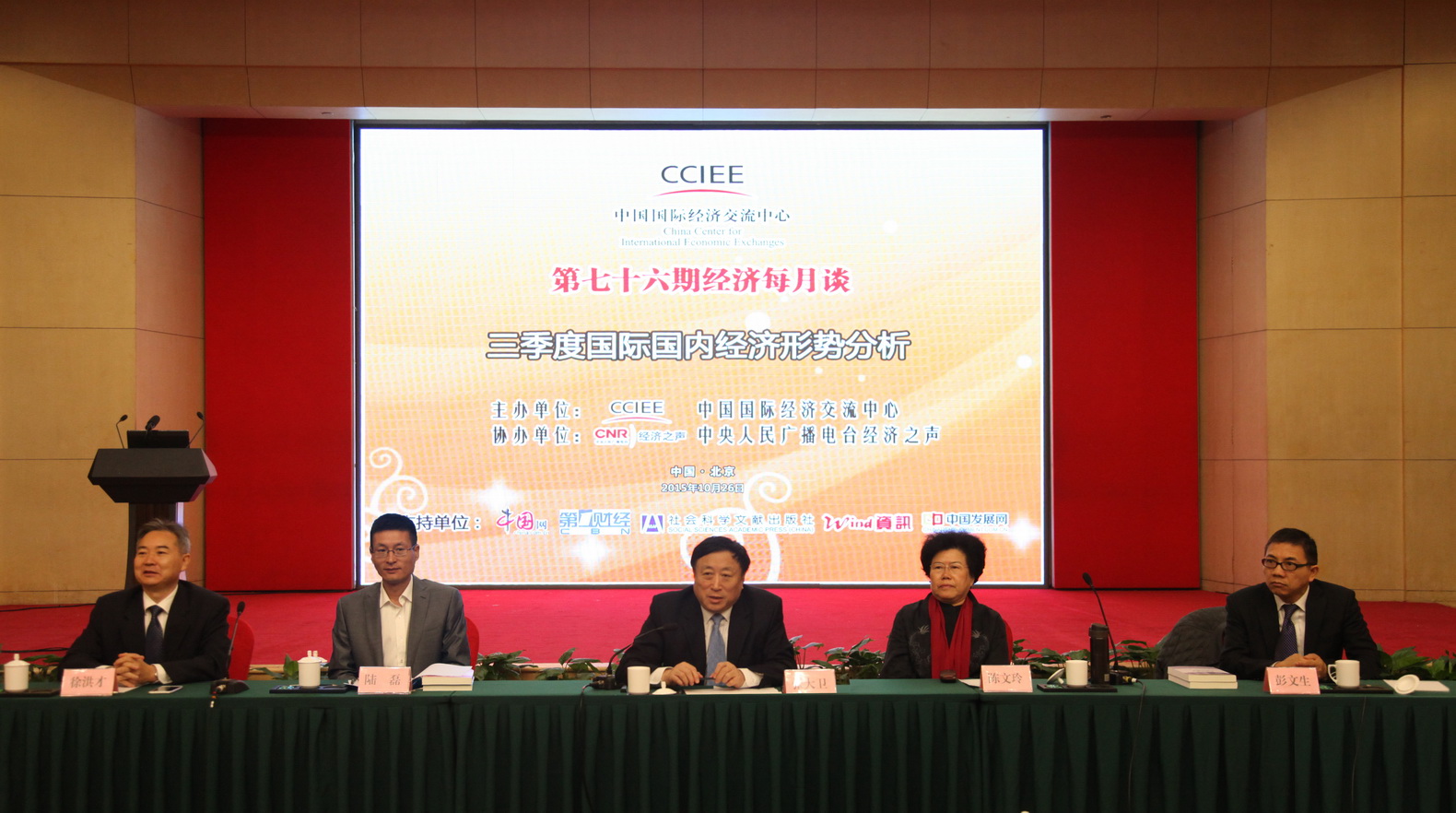CCIEE Holds the 76th Monthly Economic Talk
- Time:2015-12-30
- source:CCIEE
On the morning of 30 October 2015, CCIEE held the 76th Monthly Economic Talk on the theme of “Analysis of the International and Domestic Economic Situation in the Third Quarter”. Mr. Zhang Dawei, Vice Chairman, Secretary-General and Deputy CEO of CCIEE, presided over the talk. Chen Wenling, Chief Economist and Assistant CEO of CCIEE, Lu Lei, Director-General of the Research Bureau of the People’s Bank of China, Peng Wensheng, Global Chief Economist of CITIC Securities, and Xu Hongcai, Head of the Economic Research Department of CCIEE, respectively gave a speech.

Chen Wenling noted that while the new normal of slow global growth will be here to stay, the outlook of the world economies will become more divergent. China should seize the strategic opportunities presented during this period of time and push for greater progress in the following key areas: accelerating RMB’s internationalization, implementing the FTA strategy across the board to build a global FTA network, speeding up the adjustment and upgrade of the industrial structure and rebuilding the global value chain, further implementing the innovation-driven development strategy to form an innovation-driven economic system, and strengthening global governance to build a new type of global governance system.
Lu Lei emphasized that future monetary and other macro control policies should be more alert to the impact of monetary liquidity. If the divergence in the monetary policies of major economies and the economic downturn of emerging economies continue well into the next year, China’s central bank needs to exercise effective macroeconomic control when liquidity is squeezed. The money supply and credit growth rate in the first three quarters of this year have shown that the current monetary conditions are, on the whole, “neutrally moderate” and fairly loose.
Peng Wensheng said that given the low growth and low inflation rate of the global economy, deficient demand will be a long-term problem. To address it, structural changes and supporting measures may be needed in addition to conventional fiscal and monetary policies. He put forward three proposals to increase the aggregate demand, including adjusting the population policy to solve China’s labor problems in the future, launching tax reform to stimulate consumer demand, and galvanizing the market and unleashing the resources demand in areas along the “Belt and Road” to foster new drivers of growth.
Xu Hongcai noted that China’s monetary policy will continue to be easing this year, but for the future we’d better implement a “neutrally easing” monetary policy while promoting financial reform and opening up. He suggested that M2 growth be maintained at around 13%, and the required deposit reserve ratio of financial institutions be cut as appropriate. It is also important to cut the benchmark interest rate in real time, make better use of the credit policy to transform the growth model and adjust the industrial structure, accelerate the liberalization of interest rates, improve the market-based exchange rate formation mechanism and build a multi-level financial service system at a faster pace.
After giving their speeches, the experts answered questions from the media and audience. Some CCIEE researchers and representatives of its member organizations, relevant businesses and research institutions and the media attended the meeting.
